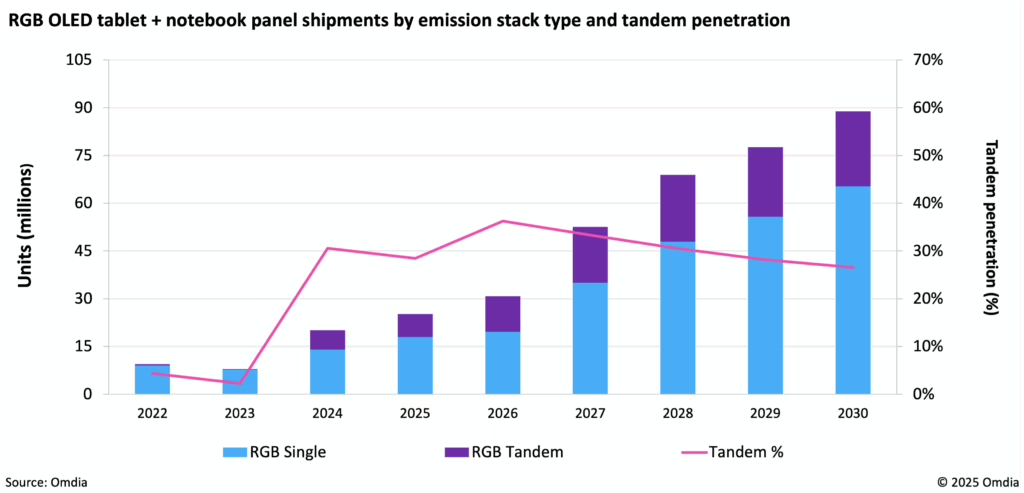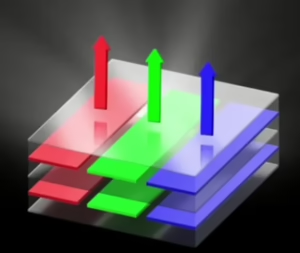Tandem OLED display technology has seen explosive growth in the tablet and notebook market, surging from negligible presence to capturing over 30% market share in 2024, according to new research from Omdia. The dramatic rise is largely attributed to Apple’s latest iPad Pro models, which use the premium display technology as part of the company’s strategy to differentiate its high-end products. The technology features stacked RGB emission layers that can theoretically double brightness and quadruple display lifespan compared to conventional OLED panels.

“Apple’s initial OLED tablet and notebook strategy targets the premium segment of the mobile PC market,” said Charles Annis, Practice Leader in Omdia’s Display Research group. “Tandem OLEDs also require more evaporation steps and fine metal masks which not only increases material consumption but also negatively affects production yields.”
This premium positioning comes with significant cost implications, with tandem OLED panels costing 50% to 75% more to manufacture than single-layer alternatives. These costs are likely to be passed on to consumers, creating a two-tier market for OLED devices.
Omdia forecasts tandem OLED penetration will jump again to 36% in 2026, coinciding with Apple’s anticipated introduction of OLED MacBook Pro models. Unit shipments of tandem OLED panels for notebooks and tablets are projected to grow at a 25% compound annual growth rate through 2030.
Meanwhile, the market for single-layer OLED displays in these categories is expected to grow even faster at 29% CAGR, catering to more price-sensitive consumers seeking an upgrade from LCD displays without the premium associated with tandem technology.
The technology has found strongest adoption in automotive displays, where tandem penetration approaches 50%, while smartphones remain challenging territory for the technology due to resolution requirements that exacerbate manufacturing yield issues.
Despite the performance advantages, the technology isn’t without drawbacks. Image quality may suffer from variations between emission layers, and the increased complexity makes displays more vulnerable to crosstalk issues.

